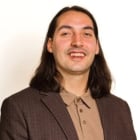Support strong Canadian climate journalism for 2025
A gathering of First Nation health directors witnessed a demonstration on Thursday of how healthcare delivery in the North could be transformed.
Tuula Nikkanen, a doctor in Finland who developed the technology, virtually monitored devices on a volunteer at the gathering in Thunder Bay. The volunteer had their oxygen levels, blood pressure and virtual stethoscope readings of their lungs and heart checked in real time despite the distance across an ocean.
The demonstration was led by 73Health, a remote health diagnostic solution first pioneered in Finland to treat the Indigenous Saami communities and travelling workers in the country’s north. Doctors only visited the town of Ivalo, for example, one day every five weeks. Now, there are doctor appointments daily using 73Health’s technology, Nikkanen told health directors for CanadianFirst Nations at the demonstration.
Cat Lake First Nation will now pilot the new diagnostic health initiative starting in January. Cat Lake Chief Russell Wesley hopes the pilot’s success can help expand the technology and end the crisis of unnecessary deaths in remote First Nations.
Currently, despite its limitations, telehealth remains one of the only options for these remote communities. In an interview with Canada’s National Observer, Nikkanen explained the difference between telehealth and what 73Health offers.
“If you think about telemedicine, there is video connection and there is audio connection, but there is nothing else,” she said.
With 73Health, Nikkannen explained, doctors will be able to have real-time readings from the stethoscope, otoscope and dermatoscope to have a clear diagnosis of skin conditions. 73Health is also developing a breath meter to treat asthma and COPD, and an ultrasound.
The new pilot also has potential to keep young families in their home community. For example, at the demonstration, health directors heard that 73Health would enable newborn babies in the community that normally require a flight just to receive their routine ear screening test.
The technology could carry significant cost-savings. With remote diagnostics, First Nations can side-step expensive flights and overnight accommodations for medical appointments that in Cat Lake alone, are usually in the thousands.
But the biggest promise is the opportunity to prevent needless deaths in the North, Wesley said. A diagnosis that could take months can now happen within days or weeks, leading to early detection.
“That is true health transformation, because you've actually transformed the health delivery system for a remote First Nation,” Wesley said. “So this is, this is what this is about, this is what I hope to achieve.”
Wesley points to the death in 2017 of Ruthann Quequish, which led to an inquest this past summer. Quequish died at 31 in her home of Kingfisher Lake after her diabetes went undiagnosed and untreated, despite several visits to the local nursing station. In a press release, Nishnawbe Aski Nation (NAN) Grand Chief Alvin Fiddler called Quequish’s passing an example of the neglect, racism and chronic underfunding of healthcare in northern Ontario First Nations.
Wesley agrees. He says there is a systemic underfunding of healthcare in the North, where nurses, working in understaffed clinics, are forced to make a diagnosis on their own. Often, this situation leads to so-called Tylenol clinics, where the only thing overworked nurses have to give is basic pain medication despite the sense of underlying disease.
“By the time they get to a specialist appointment, it's months and months later, and by that time, the medical community confirms what the patient has suspected all along, that something's wrong with them, and usually it's terminal,” Wesley said.
In Cat Lake alone, there are too many unnecessary deaths, Wesley says. The current healthcare regime has left First Nations dealing with “crisis after crisis.”
Despite the promise of the new remote diagnostic technology, Ottawa remains absent at the funding table. Wesley told Canada’s National Observer that Indigenous Services Canada (ISC) turned away the First Nations leadership’s request for 73Health funding, and directed Cat Lake leadership to the NAN Health Transformation funding pool, Welsey said.
NAN contributed over half of the $500,000 needed to kickstart the 73Health remote diagnostic pilot, with Cat Lake and a private philanthropist footing the rest of the bill. According to Wesley, ISC said it could not fund the pilot because it was at the end of its mandate and headed toward an election.
In a statement to Canada’s National Observer, the office of the Minister of Indigenous Services Canada said they provide funding through the Sioux Lookout First Nations Health Authority to ensure “communities like Cat Lake First Nation have access to the medical services they need, when they need them.”
The statement did not directly address the question related to the declined funding due to the end of the government’s mandate. However, the minister’s office said they are in communication with Cat Lake leadership.
“Our department has been in contact with community leadership to look into the implementation and integration phase of this program,” Jennifer Kozelj, press secretary for the Minister of Indigenous Services Canada, said in a statement.
The Minister’s office also encouraged Ontario to step up for healthcare delivery in the North.
Matteo Cimellaro / Canada’s National Observer / Local Journalism Initiative







Comments